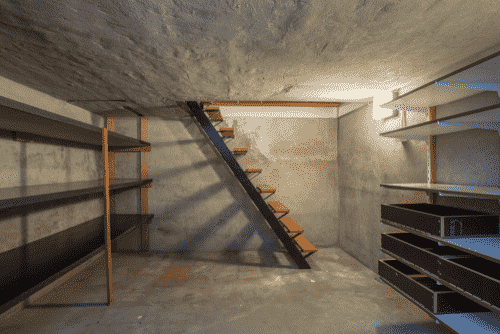Basement Waterproofing: Essential Strategies to Keep Your Home Dry and Safe

Basements provide valuable space for storage, recreation, or utilities in many homes, but their below-ground position makes them prone to water infiltration. Moisture in basements can lead to serious structural problems, mold growth, and damage to personal belongings. This is why Basement Waterproofing is crucial for maintaining the integrity and comfort of your home.
This comprehensive article explores the causes of basement water issues, different waterproofing techniques, signs that your basement needs attention, and practical tips to ensure your basement stays dry year-round. Whether you’re a homeowner dealing with moisture problems or planning a new build, understanding basement waterproofing is a key step toward protecting your property.
Understanding Basement Water Problems
Basement moisture can come from several sources, and identifying the root cause is vital for selecting an effective waterproofing method.
Common Causes of Basement Moisture
- Hydrostatic Pressure: Groundwater accumulates around your foundation and pushes against basement walls and floors, forcing water through cracks and porous concrete.
- Surface Water: Rainwater or melting snow that is improperly directed or pooled near your foundation seeps into the basement.
- Foundation Cracks: Structural movement or settling can create gaps allowing water entry.
- Poor Drainage: Blocked gutters, faulty downspouts, or inadequate grading lead water toward, rather than away from, your foundation.
- Plumbing Leaks: Internal leaks can introduce moisture from pipes inside or near the basement.
- Condensation: High humidity levels in the basement cause moisture to condense on cool surfaces.
Why Basement Waterproofing Is Critical
Ignoring moisture issues can result in:
- Structural Damage: Persistent water exposure weakens concrete and foundation walls, possibly leading to costly repairs.
- Mold and Mildew: Damp environments are ideal for mold growth, which can cause health issues like allergies and respiratory problems.
- Damage to Personal Property: Water can ruin furniture, electronics, and stored items.
- Unpleasant Odors: Musty smells often develop from persistent dampness.
- Reduced Home Value: Potential buyers often view basement moisture problems as a major red flag.
Effective Basement Waterproofing Techniques
There are multiple approaches to waterproofing a basement, each suited to different problems and budgets.
Exterior Waterproofing
This involves excavating around the foundation to apply waterproof coatings or membranes to the outside walls. It is often combined with:
- Drainage Systems: French drains or weeping tiles installed to direct water away from the foundation.
- Grading: Ensuring soil slopes away from the foundation.
- Waterproof Barriers: Membranes that repel water.
Exterior waterproofing is one of the most thorough methods but can be costly and disruptive due to excavation.
Interior Waterproofing
For many homeowners, interior solutions offer a practical alternative:
- Sealants and Coatings: Application of waterproof paints or sealants on walls and floors.
- Interior Drainage Systems: Channels installed around basement perimeter floors to collect water.
- Sump Pumps: Devices that pump out collected water from drainage systems, preventing accumulation.
- Dehumidifiers and Vapor Barriers: Help reduce humidity and condensation.
While interior waterproofing manages water that enters the basement, it doesn’t stop water infiltration.
Crack Repairs
Sealing foundation cracks with epoxy or polyurethane injections can prevent water intrusion and restore structural integrity.
Signs You Need Basement Waterproofing
- Water stains or discoloration on walls or floors
- Efflorescence (white powdery residue) on concrete surfaces
- Visible mold or mildew patches
- Peeling paint or wallpaper
- Musty odors or damp smells
- Standing water or puddles after rain
- Cracks in foundation walls or floors
- Rust on metal fixtures or support beams
If you notice any of these, it’s time to consult a professional about basement waterproofing options.
Maintaining a Dry Basement
Post-waterproofing, these maintenance tips help keep your basement moisture-free:
- Clean gutters and downspouts regularly to ensure proper water flow.
- Maintain soil grading that slopes away from your foundation.
- Inspect basement walls and floors periodically for new cracks or signs of moisture.
- Use dehumidifiers during humid seasons.
- Test sump pumps regularly to ensure they are functioning properly.
- Avoid planting large trees or shrubs too close to the foundation, as roots can cause damage and disrupt drainage.
Choosing a Basement Waterproofing Professional
Hiring an experienced contractor can make a significant difference in the success of your waterproofing project. Look for:
- Proper licensing and insurance
- Strong customer reviews and references
- Comprehensive inspection and diagnosis before quoting
- Warranty offerings on labor and materials
- Clear explanations of the recommended waterproofing approach
Conclusion
Effective basement waterproofing is essential for protecting your home’s foundation, preventing costly damage, and maintaining a healthy indoor environment. By understanding the causes of moisture, recognizing warning signs, and choosing the right waterproofing methods, homeowners can safeguard their basements from water problems.
If you’re experiencing basement moisture or want to prevent future issues, professional waterproofing services offer tailored solutions designed to keep your home dry and comfortable for years to come.




